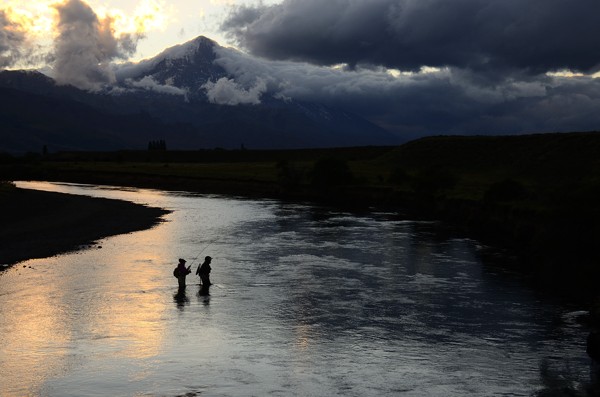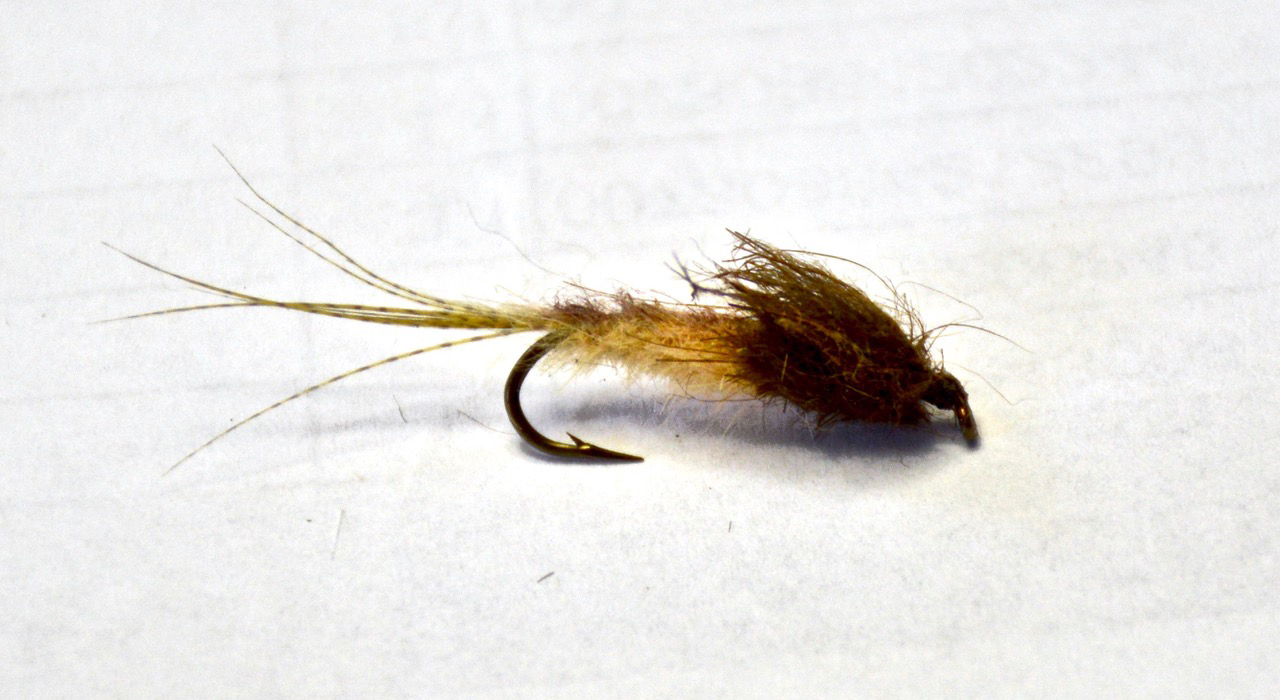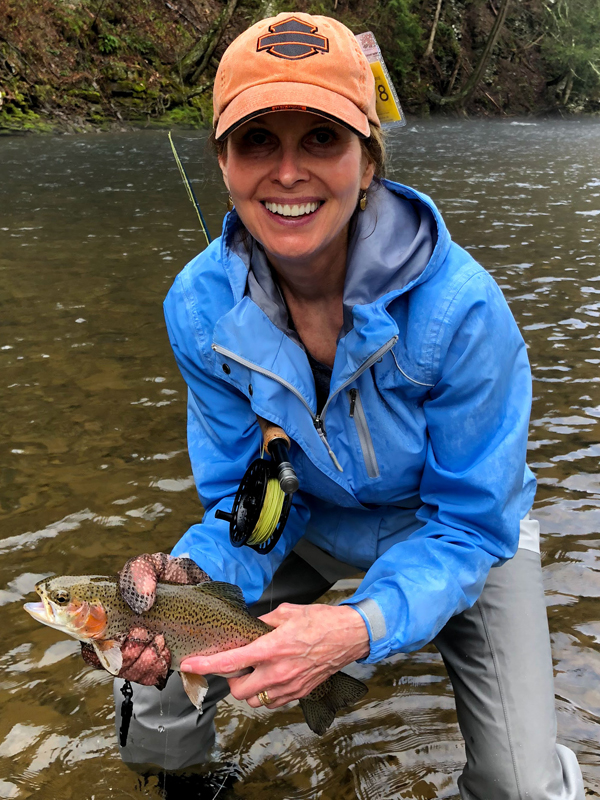Eastern Pyrenees, Spain
October 13-20, 2018
 Fall in the Eastern Pyrenees is a very special season. Mountainous wild trout streams, small tail waters, and spring creeks. Enjoy cool crisp mornings, warm afternoons, gorgeous fall color on the hill sides. Non anglers have their own private vehicle and tour guide. Monasteries, cathedrals, castles and zebra, brown and rainbows. Come along, Spain is a wonderful adventure for everyone – anglers and non anglers.
Fall in the Eastern Pyrenees is a very special season. Mountainous wild trout streams, small tail waters, and spring creeks. Enjoy cool crisp mornings, warm afternoons, gorgeous fall color on the hill sides. Non anglers have their own private vehicle and tour guide. Monasteries, cathedrals, castles and zebra, brown and rainbows. Come along, Spain is a wonderful adventure for everyone – anglers and non anglers.
For more information and prices.
To see more photos of our past trip to Spain click here
March Browns – The Misunderstood Mayfly! by Jim Kukorlo
In the first few weeks of trout season we have seen Hendricksons, Blue Quills, Early Black Stones and Caddis hatches. Along with great water levels the fishing has been very good. That is, if you don't mind fishing in a snow squalls and some very windy days. With more spring like weather the water temperature is warming up and the fishing is about to get better. I'm even starting to seen a few of my favorite mayfly - The March Browns! The reason it's my favorite hatch of the year is because it offers the fly fishermen so many different and productive ways to fly fish.
On Fishing Creek we usually start seeing the March Browns around Mother's Day and continuing into the first week of June. Water temperature near the mid-50s is necessary to trigger the start of the hatch.
 There are a lot of misunderstood things about the March Brown mayfly including the name itself. The name was adopted from a European mayfly that hatches in March that the early American Anglers were similar with, so they adopted the name even though our mayfly hatches in May.
There are a lot of misunderstood things about the March Brown mayfly including the name itself. The name was adopted from a European mayfly that hatches in March that the early American Anglers were similar with, so they adopted the name even though our mayfly hatches in May.
In cold water you can expect to see them in late morning and early afternoon. Sizes vary from size 10 to size 12. March Brown Duns color vary from a pale yellow to a light tan. Many March Brown dry fly patterns are tied too dark to match the color we have here on Fishing Creek. The bold dark brown color on their back and legs isn't what the trout sees, but rather the light tan underbody of the mayfly.
The March Brown Dun hatch is sporadic throughout the day, which is a misconception by many fly fishermen who are excepting to see a blanket hatch that we usually see with Henderickson and other mayflies throughout the season. Seeing a heavy, steady hatch of March Browns is rare. But on occasions I have seen a steady hatch of March Browns especially on cloudy rainy days. A few years ago I woke to a rainy, dreary day and immediately decided I would not stay at work all day. By noon I finished all of the important issues and took the rest of the day off. Asked where I was going, I said fly fishing. I was quickly reminded that it was raining and I mentioned that trout don't mind water and if I was right I would have fishing stories to tell. The rain was very heavy by the time I got on the water and it was one of the best March Brown hatches I have ever fished. But don't be discouraged by the sporadic hatch because there is more to the hatch then meets the eye. Blind casting a dry fly is a very effective way to fish the March Brown hatch. I don't very often blind cast a dry fly but I will when March Browns are starting to get active. Once the hatch starts the trout are very aware of all stages of the mayfly. The nymphs are in the family of clingers and are found in riffles and fast runs. In high water the nymphs migrate from the fast water to slack areas around boulders and near the shore to hatch. Even though Duns may not be on the water the nymphs are very active swimming to these areas in preparation to emerging. Fishing a nymph or soft hackle wet fly along these areas can be very productive. The nymphs have a very wide almost flat body. I prefer a size 10 2x long hook and use the dubbing loop method for a flat body effect. 
Another characteristic of the March Brown Dun is that it struggles in the surface film to hatch. Rainy cloudy days contribute to this and the trout have many opportunities to feed on them. Once the dun hatches it struggles on the water to dry it wings to take flight. When fishing the dry fly be sure to slightly twitch the fly to imitate the struggling dun. Fishing a March Brown emergers can sometimes be more productive then fishing the dry fly. A good imitation of a cripple or a struggling dun trying to hatch is a March Brown soft hackle. Fish it just below the surface. So when do you fish the dry fly, emerger or the nymph? To solve that problem I fish tandem flies, I use a thorax style dry fly with a March Brown nymph as my second fly or I use a March Brown emerger as the second or drop fly. If I'm not seeing duns on the water I will fish a weighted March Brown nymph with a strike indicator so I fish the nymph at the water depth that I want.
The March Brown seems to be the problem child of all the mayfly hatches. It's does a lot of goofy things from the nymphs stage to the adult stage. So it will be no surprise to you that in the spinner stage it's not quite like other mayflies. Like all mayflies when the dun lifts off the water it flies into the tree to molt. Like all mayflies after the female and males mate, the female will lay it eggs and both will die on the water as spent spinners. In the spinner stage the March Brown body is a medium brown color. (A Rusty Spinner is a great spinner to use) Evening arrives and you see March Brown spinners high in the air. As darkness approaches they are lower to the water and then POOF. Gone! Back up into trees to mate another night. Due to hatching in small numbers daily the spinner fall is a collection of spinners over a period of several days. March Browns like most mayflies can live for a long period of time in the spinner stage. It is believed by some that the male / female ratio has to matc h in numbers before they will mate. So if are lucky enough to be on the water to see a March Brown spinner fall it will produce an evening to remember.
h in numbers before they will mate. So if are lucky enough to be on the water to see a March Brown spinner fall it will produce an evening to remember.
Hope this helps you better understand the March Brown hatch and how to fish it and the many different ways to fly fish during the March Brown emergence period. It will give you some of the most exciting fishing opportunities of the season.
I attached a photo of my friend John R with a beautiful Rainbow Trout he caught last May on a March Brown Nymph. There were very few duns on the water that day but the nymph was the fly of the day.
Most Underrated Species on Fly Gear?
Angling Trade News is running a survey. Vote and view the results below. 10 species are in the survey. You might be surprised.
